




























See Also
See Again
The secrets behind the enigmatic Nazca Lines
- The Nazca Lines are one of the greatest mysteries of our planet. For years, humanity has been puzzled by these huge geometric drawings in the shape of animals and plants that can be found in the middle of the Nazca Desert in Peru.
Many theories emerged about the meaning of these figures, including links to religion, astrology, or even aliens.
© iStock
0 / 29 Fotos
Location - These mysterious lines can be found in the Nazca Desert, south of Peru.
© iStock
1 / 29 Fotos
Geoglyphs - The lines are known as geoglyphs - drawings on the ground made through the removal of rocks and soil to create an image - as National Geographic explains.
© iStock
2 / 29 Fotos
Figures - There are about 500 images depicting different animals, plants, humans, and geometrical shapes.
© Shutterstock
3 / 29 Fotos
Extension - These images are spread throughout hundreds of square kilometers in the desert.
© Shutterstock
4 / 29 Fotos
Bird's eye view - Due to their size, you can only have a full view of these drawings from above.
© Shutterstock
5 / 29 Fotos
Ancient civilization - These figures were supposedly created by the Nazca civilization, who lived in southern Peru for about 800 years, according to National Geographic.
© iStock
6 / 29 Fotos
Rediscovery - The lines were rediscovered around 1930, after airplanes started being used as a means of transport.
© Shutterstock
7 / 29 Fotos
The pilot - According to National Geographic, Peruvian pilot and archaeologist Toribio Mejia Xesspe spotted them as he flew over the region. He was the first to study the lines on a regular basis.
© iStock
8 / 29 Fotos
Heritage - The Nazca Lines were listed a UNESCO World Heritage Site in 1994.
© Shutterstock
9 / 29 Fotos
Studies - After discovering the lines, researchers began studying the site and the Nazca culture in depth.
© Shutterstock
10 / 29 Fotos
Depth - Researchers concluded that the Nazca Lines were made by hundreds of workers, who dug the soil to carve the images.
© iStock
11 / 29 Fotos
Materials - The workers marked the lines using wood logs, cotton ropes, and stones.
© iStock
12 / 29 Fotos
Conservation - But how exactly have these figures remained practically intact for more than 2,500 years? The answer is simple: the climate.
© Shutterstock
13 / 29 Fotos
Climate - The steady climate, with no wind or rain, allowed the drawings to remain well-preserved.
© iStock
14 / 29 Fotos
Speculations - Over the years, many theories surrounding the Nazca lines have been introduced.
© iStock
15 / 29 Fotos
Religion - Some scholars believe the drawings were made for religious reasons.
© iStock
16 / 29 Fotos
Astrology - Others say that some of the drawings match visible constellations during specific times of the year.
© iStock
17 / 29 Fotos
Constellations - According to this theory, the monkey, for instance, would be the representation of the Ursa Major, and the dolphin and the spider would represent Orion.
© iStock
18 / 29 Fotos
Alien base - Swiss writer Erich Von Däniken believed that these drawings were used as a landing site for alien spaceships.
© Shutterstock
19 / 29 Fotos
Extraterrestrials - Some went even further and put forward the theory that the figures were made by the aliens themselves.
© Shutterstock
20 / 29 Fotos
Water - US researcher David Johnson believed the lines marked where water could be found underground.
© iStock
21 / 29 Fotos
Offerings - Archaeologists Markus Reindel of the German Archaeological Institute and Johny Isla of the Institute of Andean Studies went a step further and raised the hypothesis that the figures would be offerings to the gods, as reported by Ancient Origins.
© Shutterstock
22 / 29 Fotos
Specific meaning - Each drawing would have a specific meaning, including fertility, health, and water.
© Shutterstock
23 / 29 Fotos
Labyrinth - In 2012, Professor Clive Ruggles of the University of Leicester said that one of the spiral forms would have been a labyrinth, created as a 'spiritual path,' the Daily Mail reports.
© Shutterstock
24 / 29 Fotos
Evidence - Despite all the theories, evidence points to the Nazca people as the authors of the drawings.
© Shutterstock
25 / 29 Fotos
Ceramic - Ceramic art found in the region had the same drawings found in the desert, including the monkey and the spider.
© iStock
26 / 29 Fotos
A great mystery - The truth is that the Nazca Lines continue to be one of humanity's greatest enigmas.
© Shutterstock
27 / 29 Fotos
UNESCO - As UNESCO puts it, the Nazca Lines 'are the most outstanding group of geoglyphs anywhere in the world and are unmatched in its extent, magnitude, quantity, size, diversity and ancient tradition to any similar work in the world.'
© Shutterstock
28 / 29 Fotos
The secrets behind the enigmatic Nazca Lines
- The Nazca Lines are one of the greatest mysteries of our planet. For years, humanity has been puzzled by these huge geometric drawings in the shape of animals and plants that can be found in the middle of the Nazca Desert in Peru.
Many theories emerged about the meaning of these figures, including links to religion, astrology, or even aliens.
© iStock
0 / 29 Fotos
Location - These mysterious lines can be found in the Nazca Desert, south of Peru.
© iStock
1 / 29 Fotos
Geoglyphs - The lines are known as geoglyphs - drawings on the ground made through the removal of rocks and soil to create an image - as National Geographic explains.
© iStock
2 / 29 Fotos
Figures - There are about 500 images depicting different animals, plants, humans, and geometrical shapes.
© Shutterstock
3 / 29 Fotos
Extension - These images are spread throughout hundreds of square kilometers in the desert.
© Shutterstock
4 / 29 Fotos
Bird's eye view - Due to their size, you can only have a full view of these drawings from above.
© Shutterstock
5 / 29 Fotos
Ancient civilization - These figures were supposedly created by the Nazca civilization, who lived in southern Peru for about 800 years, according to National Geographic.
© iStock
6 / 29 Fotos
Rediscovery - The lines were rediscovered around 1930, after airplanes started being used as a means of transport.
© Shutterstock
7 / 29 Fotos
The pilot - According to National Geographic, Peruvian pilot and archaeologist Toribio Mejia Xesspe spotted them as he flew over the region. He was the first to study the lines on a regular basis.
© iStock
8 / 29 Fotos
Heritage - The Nazca Lines were listed a UNESCO World Heritage Site in 1994.
© Shutterstock
9 / 29 Fotos
Studies - After discovering the lines, researchers began studying the site and the Nazca culture in depth.
© Shutterstock
10 / 29 Fotos
Depth - Researchers concluded that the Nazca Lines were made by hundreds of workers, who dug the soil to carve the images.
© iStock
11 / 29 Fotos
Materials - The workers marked the lines using wood logs, cotton ropes, and stones.
© iStock
12 / 29 Fotos
Conservation - But how exactly have these figures remained practically intact for more than 2,500 years? The answer is simple: the climate.
© Shutterstock
13 / 29 Fotos
Climate - The steady climate, with no wind or rain, allowed the drawings to remain well-preserved.
© iStock
14 / 29 Fotos
Speculations - Over the years, many theories surrounding the Nazca lines have been introduced.
© iStock
15 / 29 Fotos
Religion - Some scholars believe the drawings were made for religious reasons.
© iStock
16 / 29 Fotos
Astrology - Others say that some of the drawings match visible constellations during specific times of the year.
© iStock
17 / 29 Fotos
Constellations - According to this theory, the monkey, for instance, would be the representation of the Ursa Major, and the dolphin and the spider would represent Orion.
© iStock
18 / 29 Fotos
Alien base - Swiss writer Erich Von Däniken believed that these drawings were used as a landing site for alien spaceships.
© Shutterstock
19 / 29 Fotos
Extraterrestrials - Some went even further and put forward the theory that the figures were made by the aliens themselves.
© Shutterstock
20 / 29 Fotos
Water - US researcher David Johnson believed the lines marked where water could be found underground.
© iStock
21 / 29 Fotos
Offerings - Archaeologists Markus Reindel of the German Archaeological Institute and Johny Isla of the Institute of Andean Studies went a step further and raised the hypothesis that the figures would be offerings to the gods, as reported by Ancient Origins.
© Shutterstock
22 / 29 Fotos
Specific meaning - Each drawing would have a specific meaning, including fertility, health, and water.
© Shutterstock
23 / 29 Fotos
Labyrinth - In 2012, Professor Clive Ruggles of the University of Leicester said that one of the spiral forms would have been a labyrinth, created as a 'spiritual path,' the Daily Mail reports.
© Shutterstock
24 / 29 Fotos
Evidence - Despite all the theories, evidence points to the Nazca people as the authors of the drawings.
© Shutterstock
25 / 29 Fotos
Ceramic - Ceramic art found in the region had the same drawings found in the desert, including the monkey and the spider.
© iStock
26 / 29 Fotos
A great mystery - The truth is that the Nazca Lines continue to be one of humanity's greatest enigmas.
© Shutterstock
27 / 29 Fotos
UNESCO - As UNESCO puts it, the Nazca Lines 'are the most outstanding group of geoglyphs anywhere in the world and are unmatched in its extent, magnitude, quantity, size, diversity and ancient tradition to any similar work in the world.'
© Shutterstock
28 / 29 Fotos
The secrets behind the enigmatic Nazca Lines
These figures in the Nazca desert in Peru are one of history's greatest mysteries
© iStock
The Nazca Lines are a group of geometric drawings (geoglyphs), including animals and plants, that are located in the middle of the Peruvian desert. However, this UNESCO World Heritage Site is still a mystery to this day. Many theories emerged about the meaning of these figures, including links to religion, astrology, or even aliens.
Click on the gallery and get to know all about the Nazca Lines and the theories behind them.
RECOMMENDED FOR YOU

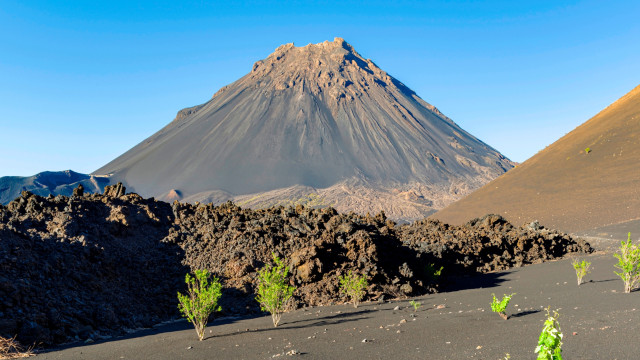













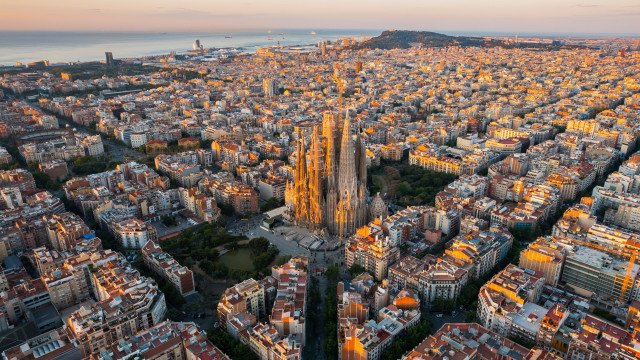












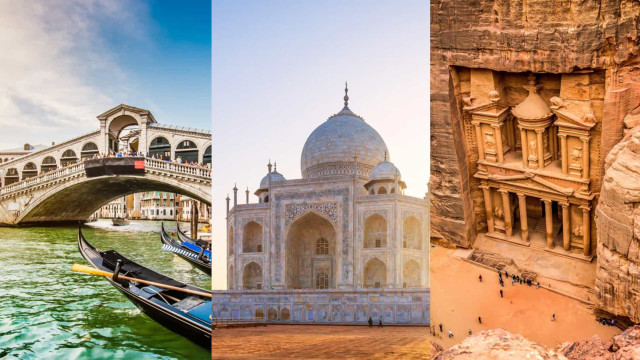

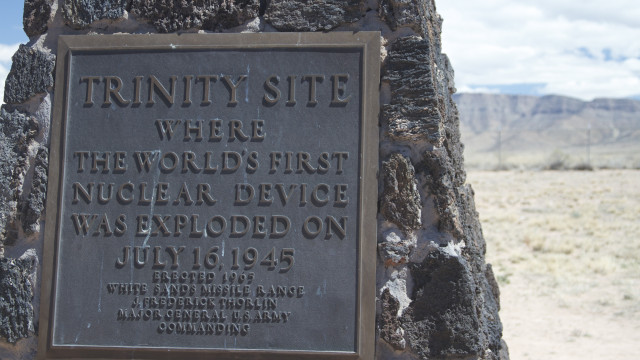
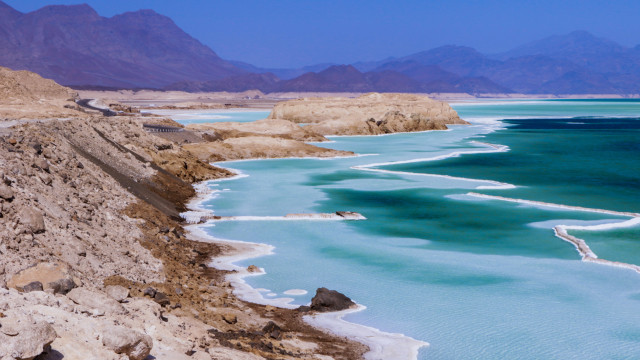




MOST READ
- Last Hour
- Last Day
- Last Week
-
1
CELEBRITY Relationships
-
2
LIFESTYLE Throwback
-
3
LIFESTYLE Catholicism
-
4
LIFESTYLE Home remedies
-
5
LIFESTYLE Putin
-
6
FOOD Fine dining
-
7
LIFESTYLE Emotions
-
8
TRAVEL Nations
-
9
LIFESTYLE History
-
10
LIFESTYLE Emergency








